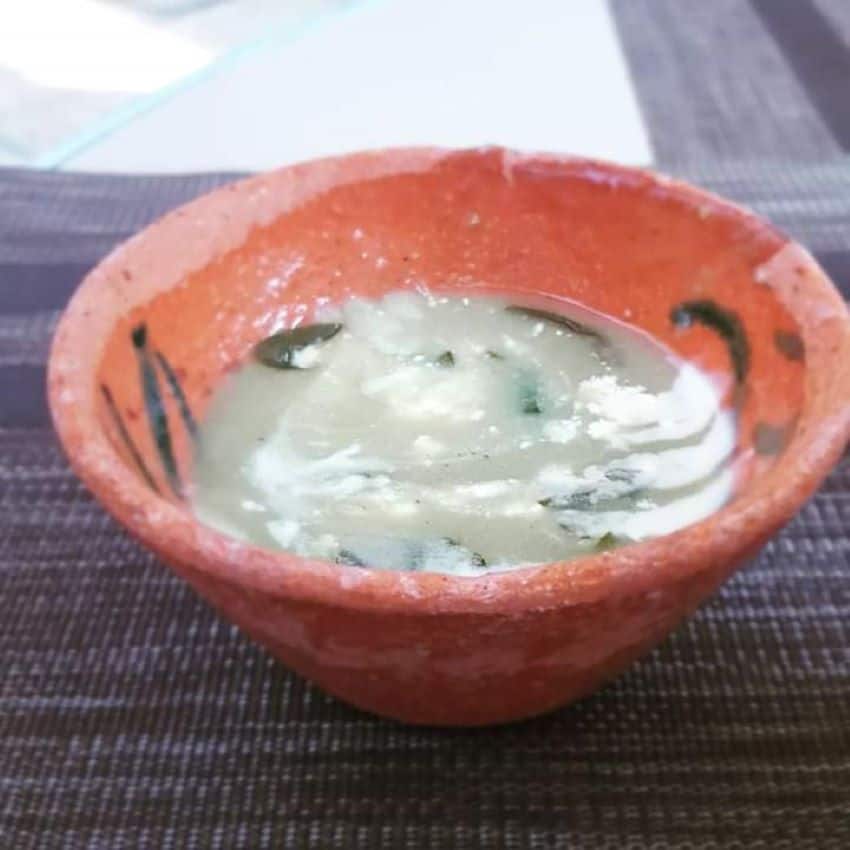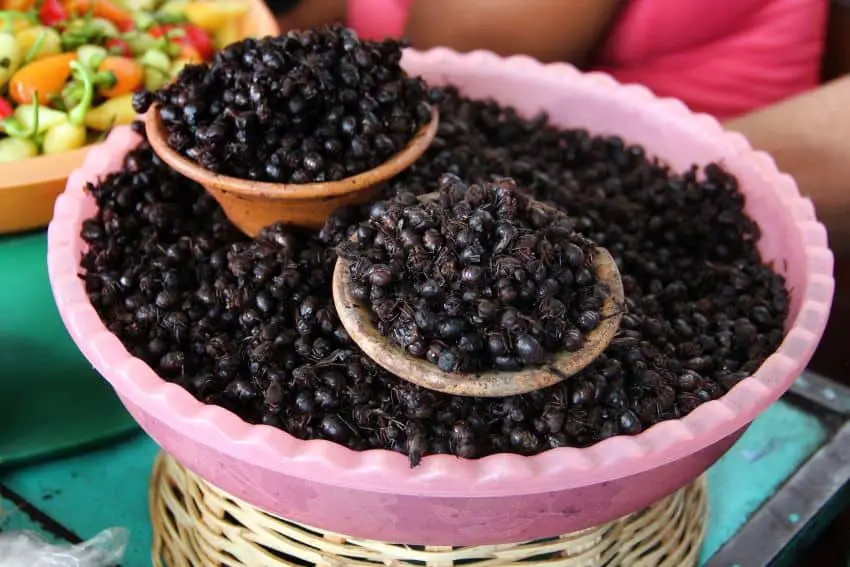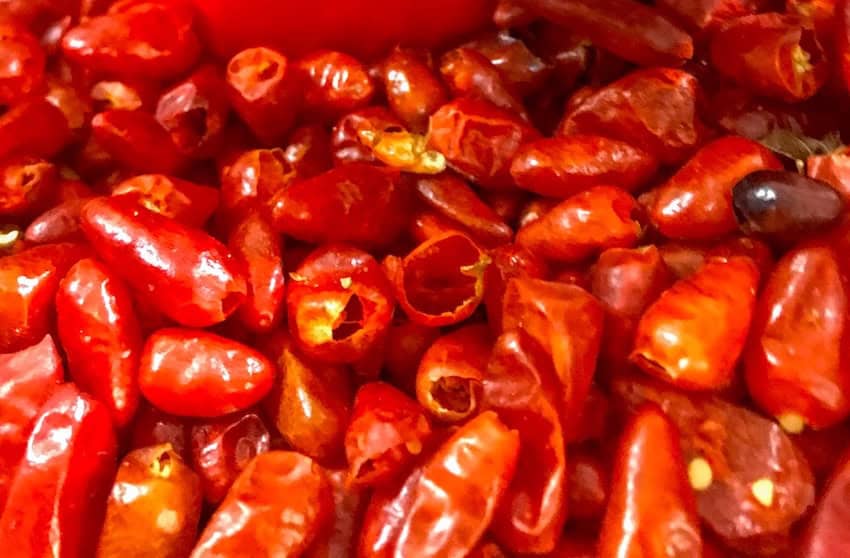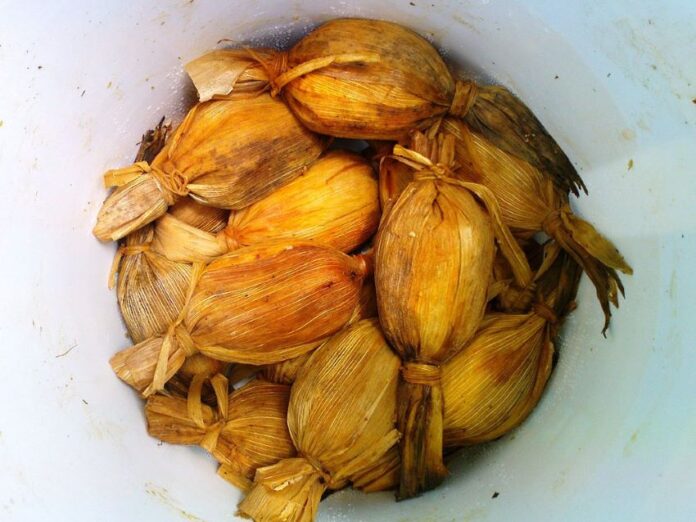Chiapas is Mexico’s largest coffee-producing state. That fact alone, along with the quality of its coffee beans, ensures that it will be mentioned in any article about the country’s best food and drinks. But coffee is hardly Chiapas’ only claim to gastronomic fame.
The nation’s southernmost state is home to the largest Indigenous population, with 28% of its residents speaking an Indigenous language; Tzeltal and Tzotzil, two languages of the Mayan language family, are the most commonly spoken. Chiapas’ ethnic diversity, not surprisingly, is reflected in a wealth of traditional dishes and drinks.

The gastronomy of Chiapas
A staggering number of strange and unusual natural ingredients are found in Chiapas and used in its gastronomy, called “la comida chiapaneca” as a whole. These include fruits like macús and the squash-like chayote, both of which are actually served like vegetables in the region’s rich broths and stews; the jicama-like chinchayote root; pataxete beans; a cacao variety called pataxte or cacao blanco; and unusual creatures that range in size from chicatana ants and pexjol worms to shuti snails, squirrels, opossums and armadillos.
However, just as it has been for thousands of years across Mesoamerica, corn remains the staple crop in Chiapas, with corn-wrapped tamales the staple dish, both as part of the daily diet and as a treat for special occasions. But diversity is ever-present here too, with a surfeit of tamal variations available. In an article detailing the state’s gastronomy, food encyclopedia Larousse Cocina noted nearly 30 varieties, the most exotic of which is surely the iguana tamal.
The signature tamal de bola of Chiapas
The best-known of these numerous tamal preparations is the ball-shaped, pork-rib-stuffed, chili-spiced delicacy known as tamal de bola. It’s certainly one of Chiapas’s signature dishes, as ubiquitous in the state as sopa de chipilín, a soup made with the aromantic herb it’s named for, chicken broth and masa, often including a ball of corn dough stuffed with cheese.
Both of these specialties have localized roots: the tamal de bola remains most popular in Comitán and San Cristóbal de las Casas; while sopa de chipilín is thought to have been created in Chiapa de Corzo. However, each is also representative of the state’s culinary heritage as a whole. Chipilín, for example, is also a frequent ingredient in tamales.

The unique shape of the tamal de bola is created by hand kneading the dough before wrapping it in corn husks and tying it at both ends. Obviously, there are a few other steps that are necessary first. One is making a sauce and stewing the meat in it. The typical ingredients are water and pork broth with tomato, oregano, thyme, cumin and ancho or guajillo chilis. Once these are burbling the pork rib is added and everything is brought to a boil for about five minutes or until done. This saucy meat mixture will be inserted into a cavity in the corn dough for each tamal, along with a fried Chiapas chili and an optional bit of pork rind. Then the whole assemblage, including corn husks, is steamed for about an hour.
The unique chili peppers of Chiapas
Anyone born in Mexico or who has spent an appreciable amount of time in the country knows the importance of chili peppers to the nation’s cuisine. Every significant variety of salsa contains chilis, and every food dish boasts some variety of sauce. It’s inescapable.
But what sets food in Chiapas apart are chilies unique to the region. The tamal de bola, for example, is traditionally made with a very spicy and intensely flavorful fried simojovel, a chili named for Simjovel de Allende, municipality where it is almost exclusively grown. Simojovel is also a key ingredient in many Chiapanecan salsas.

Meanwhile, the more moderately spicy tusta chili is grown mainly in the Chiapas highlands and the neighboring state of Oaxaca. It’s an important ingredient for many regional tamales and moles. Chimborote and amaxito are also notable, the former for its contributions to shuti snail soups, the latter for its use in green sauces.
Say sí to dessert
Chimbos are nearly as much to say as they are to eat. Nearly, but not quite. This sweet bread with a touch of anise flavor is the iconic regional after-dinner treat. It’s not just its ingredients — flour, sugar, eggs, butter and anise — that make it special, but also the skillful manipulations of local bakers, who give the bread its distinctive crispy on the outside, soft and spongy on the inside texture. After you’ve had a few of them, feel free to refer to them by their diminutive and equally fun nickname, chimbolitos.
Traditional drinks in Chiapas
You could drink coffee with your tamal de bola or chimbo. Chiapas’ aromatic, high-altitude coffees are always enjoyable, especially brewed café de olla style in a clay pot with brown sugar and cinnamon.
But aguas frescas, popular throughout Mexico, are another good option, whether national favorites like horchata or more localized specialties such as pulunche, which mixes ground pulp of cacao with water, sugar and ice. Atole, the ancient drink made from water and corn flour and sweetened with sugar or honey, is also commonly consumed. Local flavor add-ons include pumpkin and guava. Meanwhile, another non-alcoholic option called esmoloc is a fragrant dissolving of grains from the corn smut fungus cuiltlacoche in water.
For a stronger pairing, sample balché, a sugar cane-aided liquor with Maya roots. Fermented tree bark may not sound like the most appetizing of tipple ingredients. But when it comes from the purple-flowered Lonchocarpus violaceus tree and flavorful cinnamon, anise and melipona honey from stingless bees are added, it’s a tasty blend of sweet and sour. Better yet, it’s reputed to put one into a trance.
Where to sample Chiapaneco cuisine
Las Pichanchas, a restaurant in the state capital of Tuxtla Gutiérrez, is the must-try place to experience the rich gastronomy of Chiapas and regional folkloric dancing.
Chris Sands is the Cabo San Lucas local expert for the USA Today travel website 10 Best, writer of Fodor’s Los Cabos travel guidebook and a contributor to numerous websites and publications, including Tasting Table, Marriott Bonvoy Traveler, Forbes Travel Guide, Porthole Cruise, Cabo Living and Mexico News Daily. His specialty is travel-related content and lifestyle features focused on food, wine and golf.
